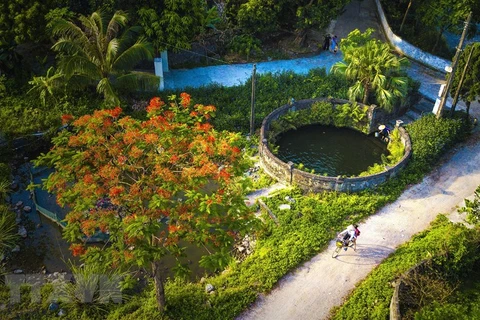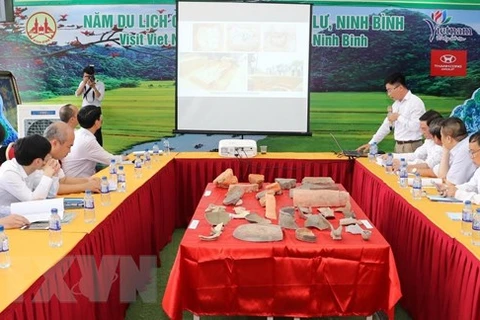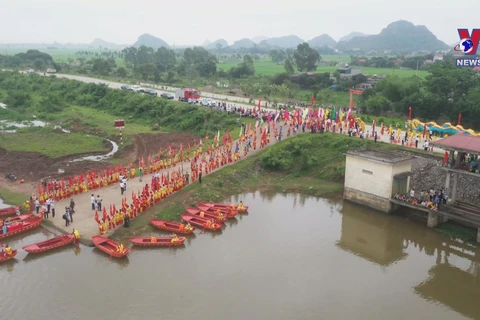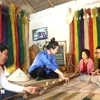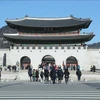 The Hoa Lu ancient capital, a special national relic site, attracts millions of visitors annually. (Photo: VietnamPlus)
The Hoa Lu ancient capital, a special national relic site, attracts millions of visitors annually. (Photo: VietnamPlus) Ninh Binh (VNA) – As one of the four core relic sites in the Trang An Landscape Complex, the ancient capital of Hoa Lu is a reminder of a glorious period in the nation's history.
Capital of Vietnam's first centralised feudal state
Hoa Lu became the capital of Vietnam's first centralised feudal state when Dinh Bo Linh ascended to the throne, taking the name King Dinh Tien Hoang and naming the state Dai Co Viet in 968. The remnants of the ancient capital were found nearly 100km south of Hanoi, in Truong Yen commune, Hoa Lu district, Binh Binh province.
Although Hoa Lu was the capital of Dai Co Viet only for a short time, 42 years, it witnessed many significant events connected to the nation's fate. These include King Dinh Tien Hoang's defeat of warlords to unite the country, the victory over invading Song troops from the north and the rise of the Early Le Dynasty, followed by the Ly Dynasty, which then moved the capital to Hanoi.
Hoa Lu was the capital for 12 years under the Dinh Dynasty (968-980), 29 years under the Early Le (980-1009) and the start of the Ly Dynasty (1009-1010).
Surrounded by steep limestone mountains and the Hoang Long river that create strong natural barriers, Hoa Lu also had great military value.
The ancient capital covered an area of 300 ha, comprising the Inner, Outer and South Citadels, encircled by defensive earthen walls.
The Outer Citadel, about 140ha wide, is located in Yen Thanh village, Truong Yen commune. It is the main part of Hoa Lu, housing King Dinh Tien Hoang's temple and King Le Dai Hanh's temple. The two temples are about 500m apart.
The temple dedicated to King Dinh Tien Hoang still keeps two royal stone beds, which have been recognised as national treasures.
Around 100km from Hanoi, it takes about two hours to reach Hoa Lu. Visitors can combine a trip to Hoa Lu with other famous scenic spots in Ninh Binh, such as the Bai Dinh-Trang An complex, Tam Coc-Bich Dong, Phat Diem stone church or Thung Nham bird park and Van Long wetland reserve.
Conserving and promoting the values of Hoa Lu
The ancient royal capital has been mentioned, though only briefly, in many history books, such as Viet su luoc (Brief History of Vietnam), An Nam chi luoc (Abbreviated Records of An Nam), Du dia chi (Geographical Book), Dai Viet su ky toan thu (Complete Annal of Dai Viet).
The Hoa Lu historical and cultural relic was first classified as a national relic in 1962 and later a special national relic in 2012.
At many scientific workshops on the relic, many scientists shared a common view that Hoa Lu, as a prosperous capital city and a big military archaeological work in the past, had a special significance to research into the history of the Dinh and Early Le Dynasty.
The conservation and promotion of the values of the Hoa Lu ancient capital were discussed at a recent scientific seminar organised by the Department of Culture and Sport of Ninh Binh, in coordination with the Relics Preservation Institute under the Ministry of Culture, Sports and Tourism.
The event aims to further clarify the ancient capital's role, position, characteristics and scale in history, assess the management and maintenance of the relic so far, and propose directions, tasks and solutions to improve conservation work and optimise the value of the relic in the future, for example turning the relic site into a historical park./.


